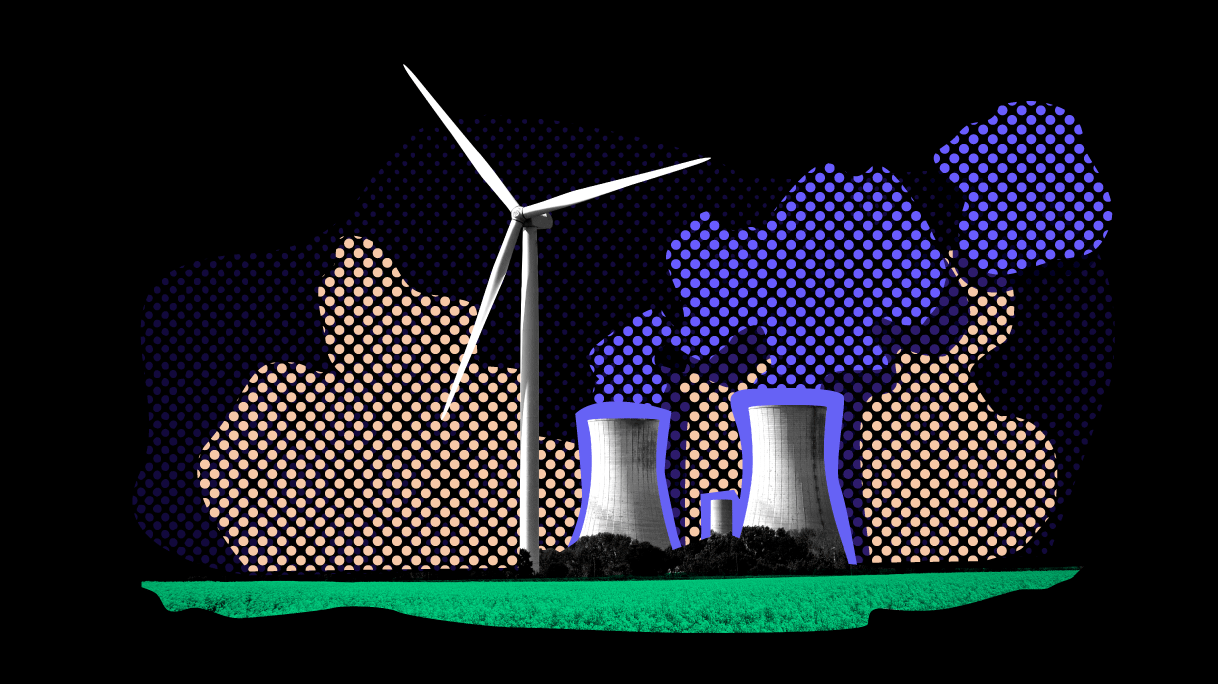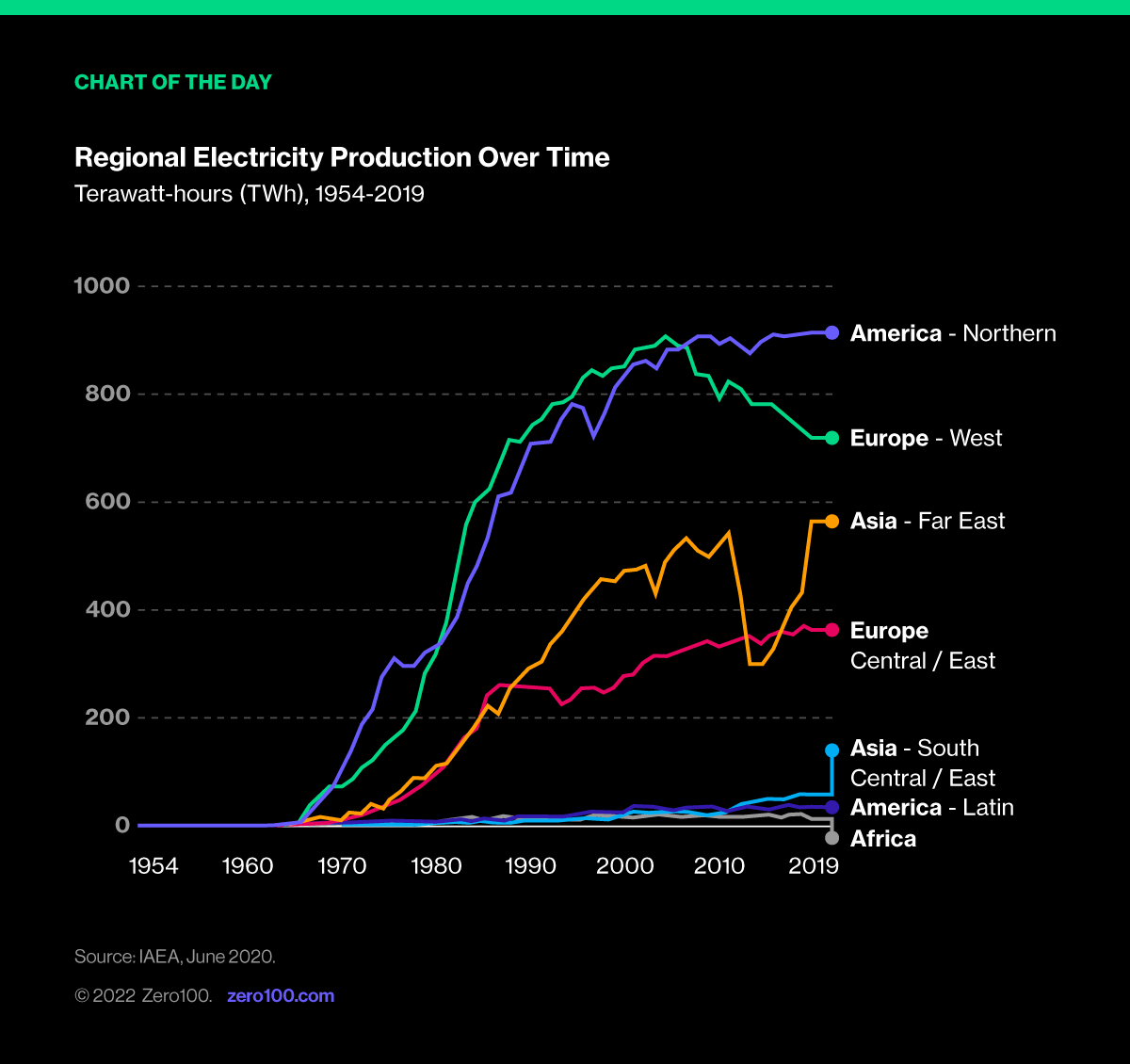
Zero Carbon Supply Chains Need Nuclear Energy
Nuclear energy can generate 30+ years of power from one kilogram of fuel, yet contributions to the electricity market has halved in the last 25 years. Could their be a energy mix that could fast track net zero?
‘No Nukes!' was a 1980's rallying cry that many (especially Germany's Greens) seem unable to square with the bigger problem of climate change. It feels like we're trying to bake a cake (zero carbon supply chains) without eggs (nuclear energy). Bad idea.
Supply Chains Need Energy
Supply chains account for 60% of global carbon emissions. 14% of this comes from transportation and 56% comes from energy used in extraction or production operations. Digitization, which is key to supply chain efficiency, also craves energy to run data centers around the world. All these vectors of demand are decarbonizing, in part by driving a new wave of electrification. Nuclear, as a zero-carbon power source, could be the key to a permanent solution.
Sentiment, especially after the recent U.S. Supreme Court ruling against EPA regulations on carbon emissions, is suddenly favoring nuclear. The urgency is to figure it out before decommissioning so many power plants that we lose the option to decarbonize electrification by solving the cost, safety, and political problems of nuclear, rather than by solving the engineering and weather-constraint problems of a renewables-only approach to energy.

Dr. Nuclear & Mr. Radioactive
Nuclear power is the Jekyll & Hyde of sustainability – good because its zero-carbon, but bad because . . . wait, why again? Let's look at the pros and cons from a 2022 supply chain perspective:
Is nuclear power dangerous? Yes, but not very deadly. Chernobyl caused 30 deaths directly via the explosion and radiation exposure. There is debate about additional deaths due to cancer but little evidence of causal impact. Three Mile Island had a death toll of zero. For comparison, the U.S. Bureau of Labor Statistics reports that there were 4,764 fatal work injuries in the U.S. in 2020. I'll take nukes on this count.
What about nuclear waste? It is hazardous, but it's been safely handled for decades with less evidence of serious harm than, for instance, tree removals. The half-life of nuclear waste is thousands of years, so people are rightfully concerned. But steel and concrete storage casks keep radiation safely contained, and even in transport, accidents have been few and far between. Not to dismiss the danger, but compared to climate change, this feels low risk.
Isn't it expensive? Yes, in terms of up-front capital, but maybe not if fully developed as a sector. Nuclear power plants have a reputation for massive cost and schedule overruns, but that was true of the railroads too. Looking ahead, smaller reactors manufactured with standard designs on factory lines promise lower costs and faster production.
What role does nuclear energy play geopolitically? Good question. Ukraine is currently suffering an invasive war by a villain funded with hydrocarbon cash. It's also worth noting that China is rapidly scaling up its use of nuclear power as Europe and North America dial it down. Geopolitical power balances and energy strategy have always been linked. Why step away from this vital resource at such a time of tension?
What Should Supply Chain Leaders Do?
First: Cast your decarbonization efforts in terms of operational efficiency, material selection, and the energy mix you buy or influence. Most are already doing this. Physical network modeling scenarios should give nuclear-heavy utilities an edge on energy cost and carbon scores.
Second: Consider collective action with other big energy buyers where combined demand in a geography might swing decisions about decommissioning old plants (e.g., Diablo Canyon in California). Germany is politically unable to make the obvious strategic move to keep its nukes running so it can get off Russian gas – this is totally insane. A few big energy users might help with political cover for those trying to keep nuclear alive.
Last: Add a 60-something nuclear engineer to your sustainability team. Many began as starry-eyed scientists dedicated to solving the energy crisis. Among this group you'll find deep expertise and subtle tribal knowledge about the pros and cons of nuclear. Plus, they'll cost you a fraction of what you'll pay for a top data scientist.
Nuclear energy is not risk-free, but ignoring it in the face of climate change is like refusing to wear a seat belt for fear of drowning after driving off a bridge.
I'll take the seat belt.
Critical Reading
BLOOMBERG
California Throws 70,000 Truckers in Gig-Work Legal Limbo, Risking Supply Chains
Commentary: California state regulations requiring workers to satisfy a three-part test now apply to independently contracted truckers, many of whom are unsure if they will be able to comply.
#trucking #regulations
TIME
Climate Crisis Is Driving Food Nationalism and Changing Global Trade
Commentary: Soaring food prices are plunging millions of people into poverty and hunger, particularly in the countries that are unable to grow their own food. At least 19 countries have imposed export restrictions in response.
#foodcrisis #export #farmers
SUPPLY CHAIN DRIVE
Nike Overhauls ERP in Bid for Better Supply Chain Speed, Agility
Commentary: In response to elevated transit times (roughly two weeks longer than pre-pandemic), Nike is launching a new ERP system. Set to deploy in Greater China this month and in North America in fiscal year 2024, the new system is designed to increase inventory visibility and productivity.
#nike #ERP